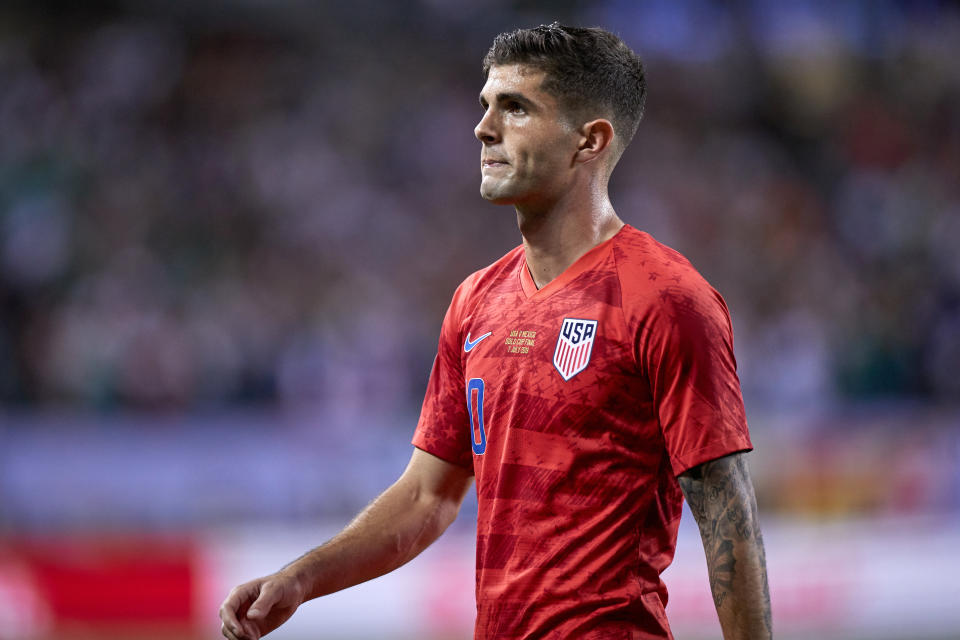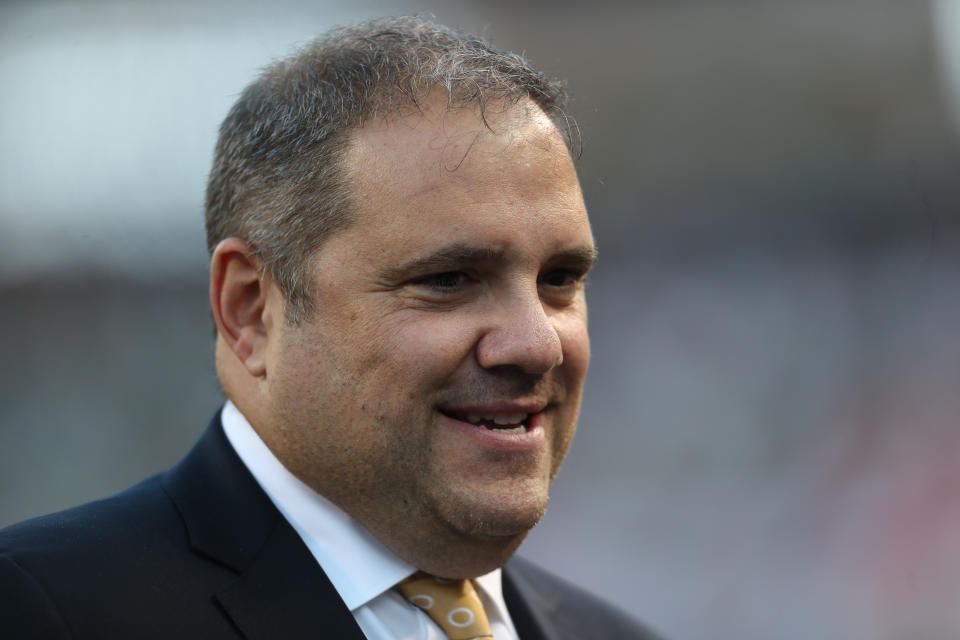Why the USMNT could face a bumpier path to the World Cup if CONCACAF's qualifying format changes
The expected change to CONCACAF’s World Cup qualifying format could be bad news for the U.S. men’s national team.
During an interview last week on the Fox Sports show “Indoor Soccer,” CONCACAF president and FIFA VP Victor Montagliani once again suggested that the “Hexagonal” — the six-team round-robin that has served as the region’s qualifying scheme since the 1990s — will be replaced by a different one whenever international soccer returns amid the global coronavirus pandemic.
The plan most likely to be adopted involves 12 nations split into three four-team groups, multiple sources confirmed to Yahoo Sports. If it happens, the USMNT’s road to the 2022 World Cup in Qatar would become a whole lot bumpier.
If anyone forgot, the Americans failed to qualify for Russia 2018. After topping CONCACAF for three consecutive cycles, an aging U.S. side lost to Trinidad and Tobago on the final day of the most recent Hex, finishing fifth and missing out on a World Cup for the first time in more than three decades.

Now, Gregg Berhalter’s young and inexperienced U.S. squad — which has played just two matches on foreign soil since Berhalter was hired as coach 18 months ago — faces the prospect of having even less margin for error in its effort to return the program to the biggest stage in sports.
In the three-group format, only the group winners would automatically punch their tickets to Qatar. Based on the current FIFA rankings — which would have determined the six participants in the Hex — the U.S. would be one of the three seeds, along with Mexico and Costa Rica. While the Americans wouldn’t have to face fellow regional powers (more on that later), the new system would resemble CONCACAF’s old semifinal round, which was scrapped this cycle in favor of the inaugural Nations League. Anyone who knows their history understands that the semifinal round was, in most cases, more difficult to navigate than the Hex.
With just six games to play instead of 10, one bad result can be fatal. The U.S. had close shaves in the semis on several occasions over the last 20 years. In a must-win game in Kansas City in 2012, the tension was palpable when Jurgen Klinsmann’s side fell behind on an early goal by Guatemala’s Carlos Ruiz before rallying for a 3-1 win. Four years later, they faced another must-win against Los Chapines after an upset in Guatemala City.
Disaster was even closer in 2000 in Barbados. That time, the Bruce Arena-led U.S. was just 27 minutes away from being eliminated from the 2002 World Cup by the tiny island nation when Clint Mathis broke a scoreless deadlock and the floodgates opened en route to a 4-0 win. Arena’s team would go on to reach the quarterfinals in South Korea/Japan, the Americans’ best showing since 1930.
If CONCACAF goes with three groups, there would presumably be a lifeline for the best second-place finisher. CONCACAF is allocated 3.5 spots for 2022; the region’s No. 4 team will participate in an intercontinental playoff to determine who gets to go to the main event.

There wouldn’t be much wiggle room, though. The seeded team that draws dangerous Honduras would be especially unlucky; Los Catrachos topped a semifinal group over Mexico in 2008 and reached the World Cup in both 2010 and ’14. And as that devastating U.S. loss in Trinidad in 2017 showed, strange things happen on the road in CONCACAF.
As promising as Berhalter’s new core of youngsters is, only Christian Pulisic has played in a World Cup qualifier before. Other surefire starters like Tyler Adams, Sergino Dest, Weston McKennie and Zack Steffen haven’t. Grueling travel, terrible fields, energy-sapping heat and humidity and unrelenting pressure await them.
Even if the Americans successfully navigate those challenges, this new format would rob them of the contests that most resemble the sort of competition they’d face at the World Cup. There would be no trip to Mexico City’s iconic Azteca Stadium or to San Jose, Costa Rica, where the U.S. hasn’t managed so much as a tie since 1992. Win or lose, those experiences make young players better.
Montagliani stressed that nothing has been finalized yet. “Everything is on the table,” he said, including potentially hosting a qualifying tournament at a single location if the heath crisis necessitates it.
Still, the status quo sure doesn’t sound likely to survive COVID-19, no matter the impact on the USMNT.
“I think it’s a format that has some flaws to it,” Montagliani said of the Hex. “If we need to change, then we will.”
More from Yahoo Sports:


